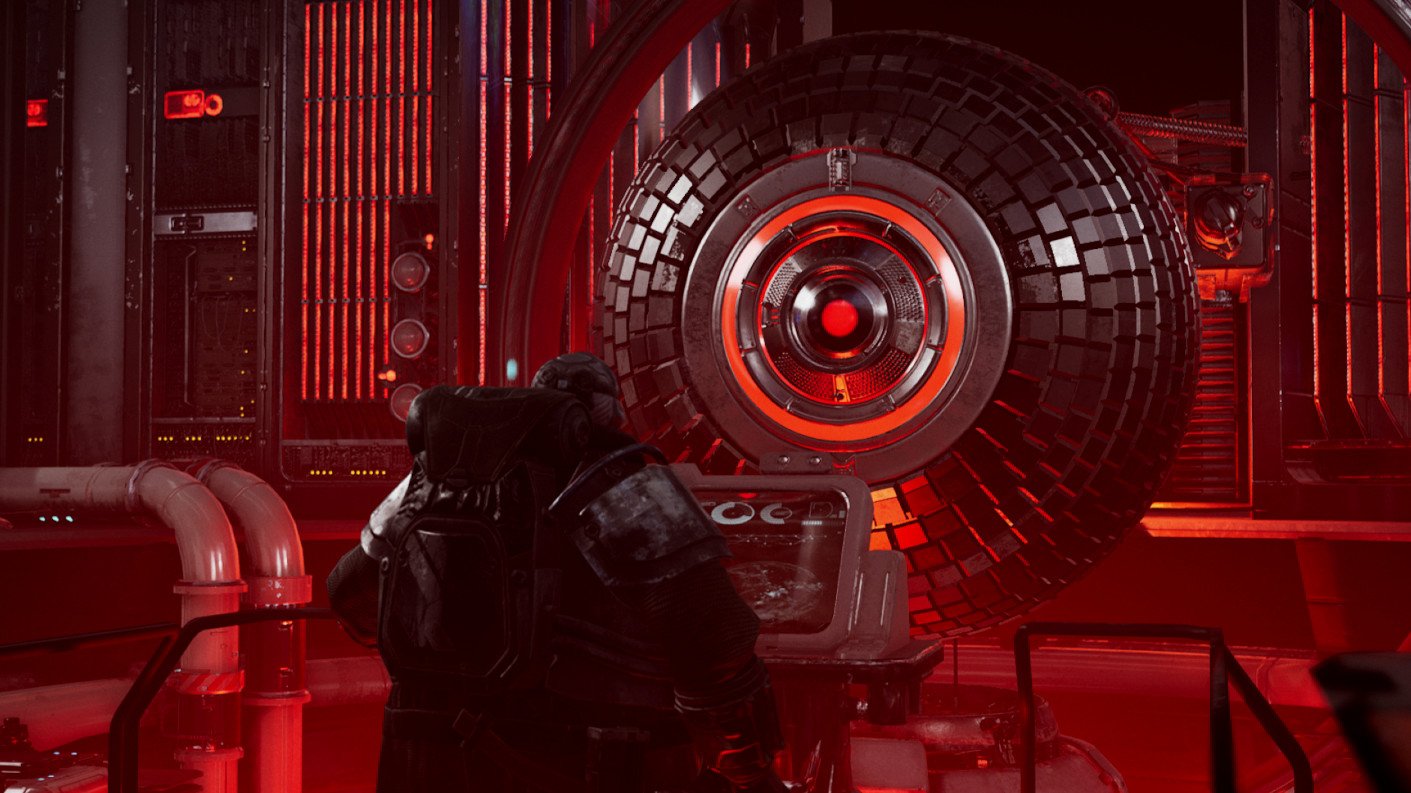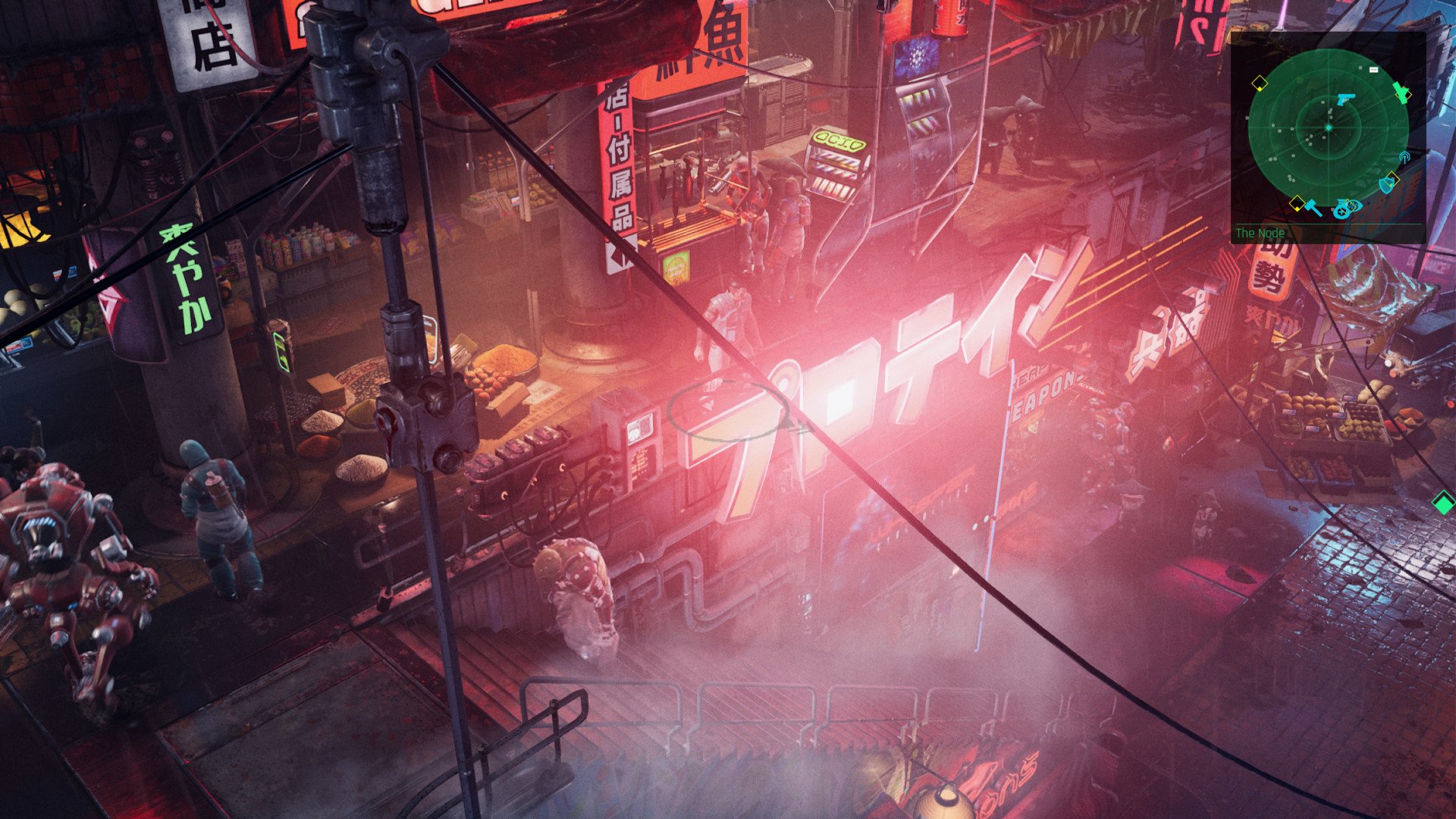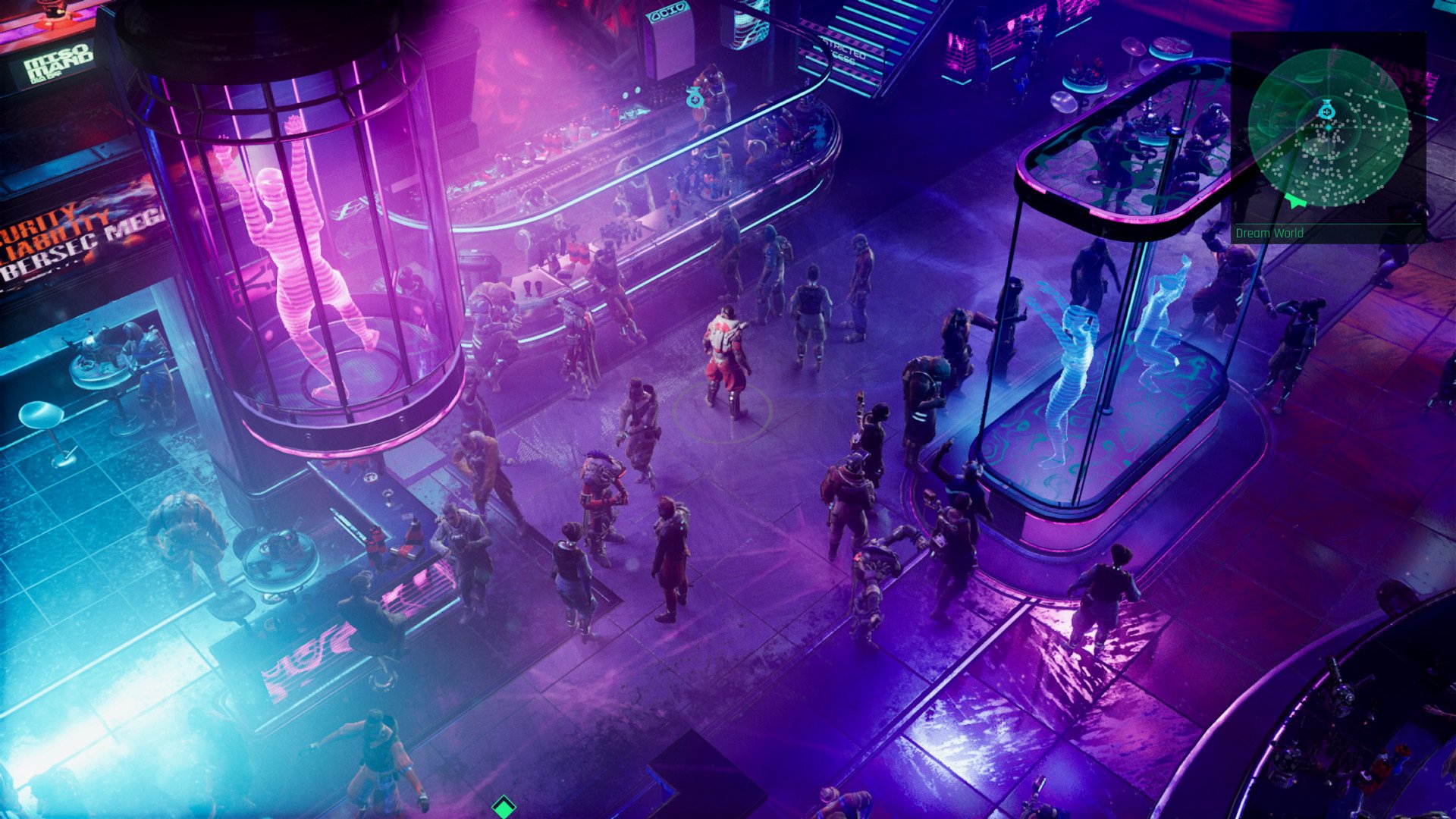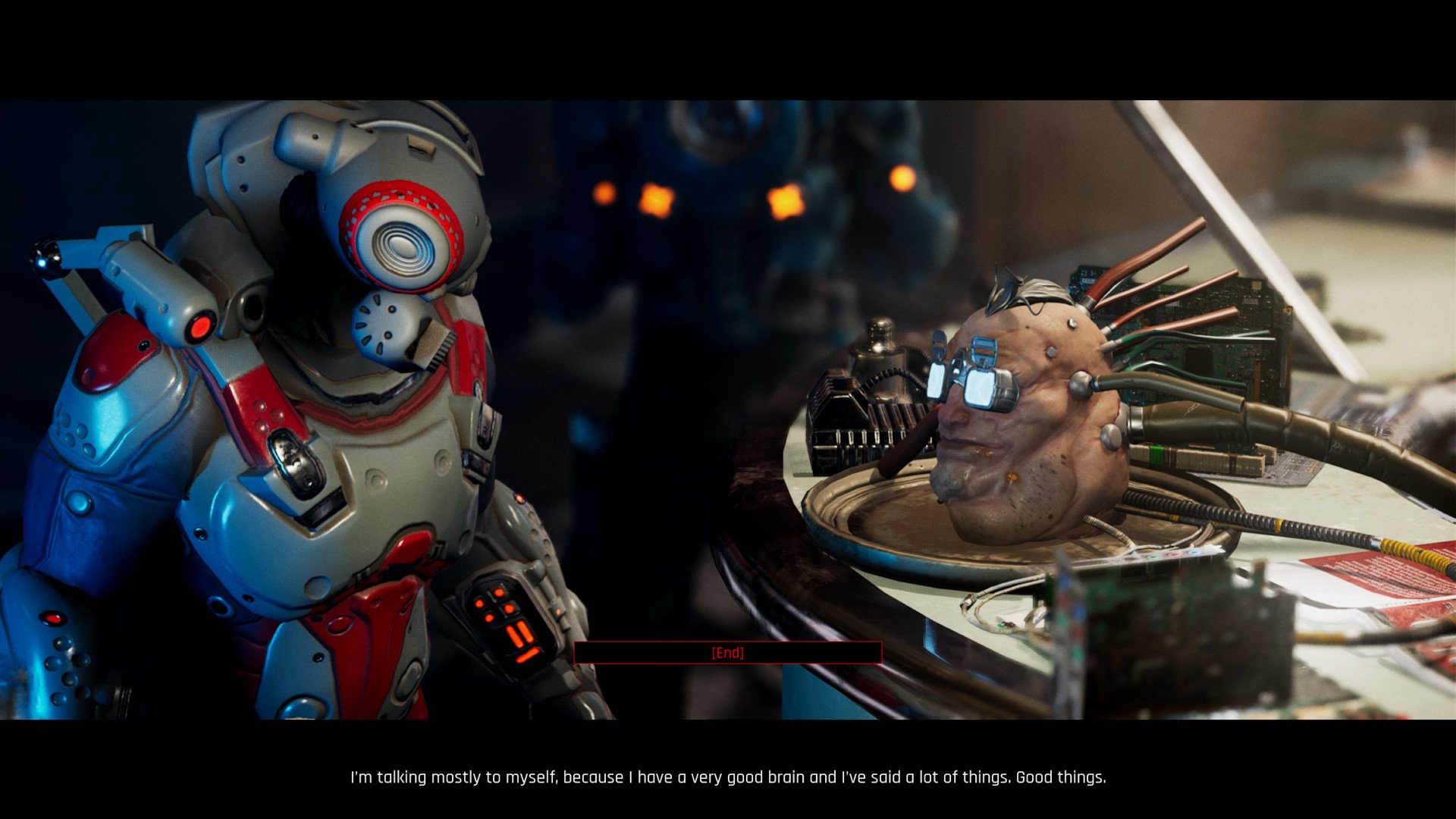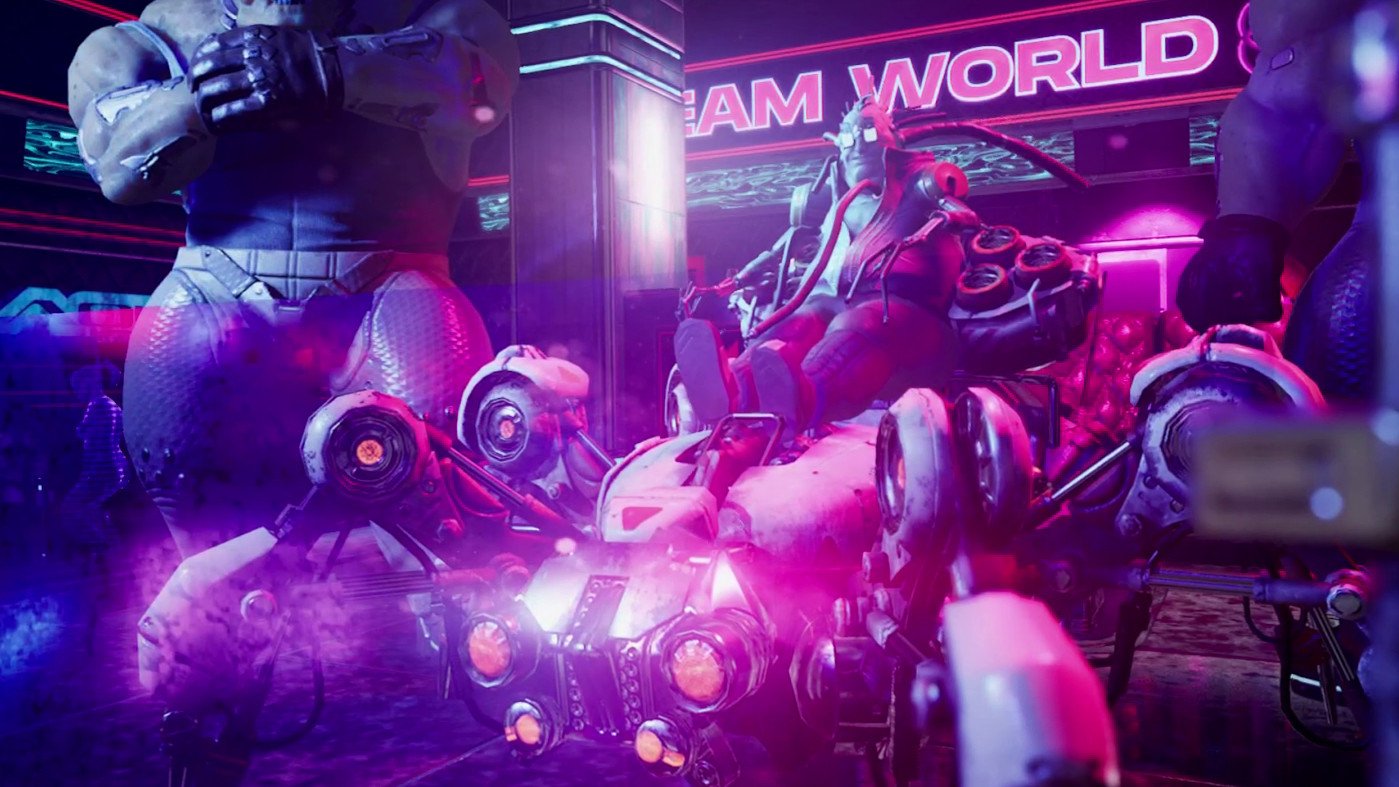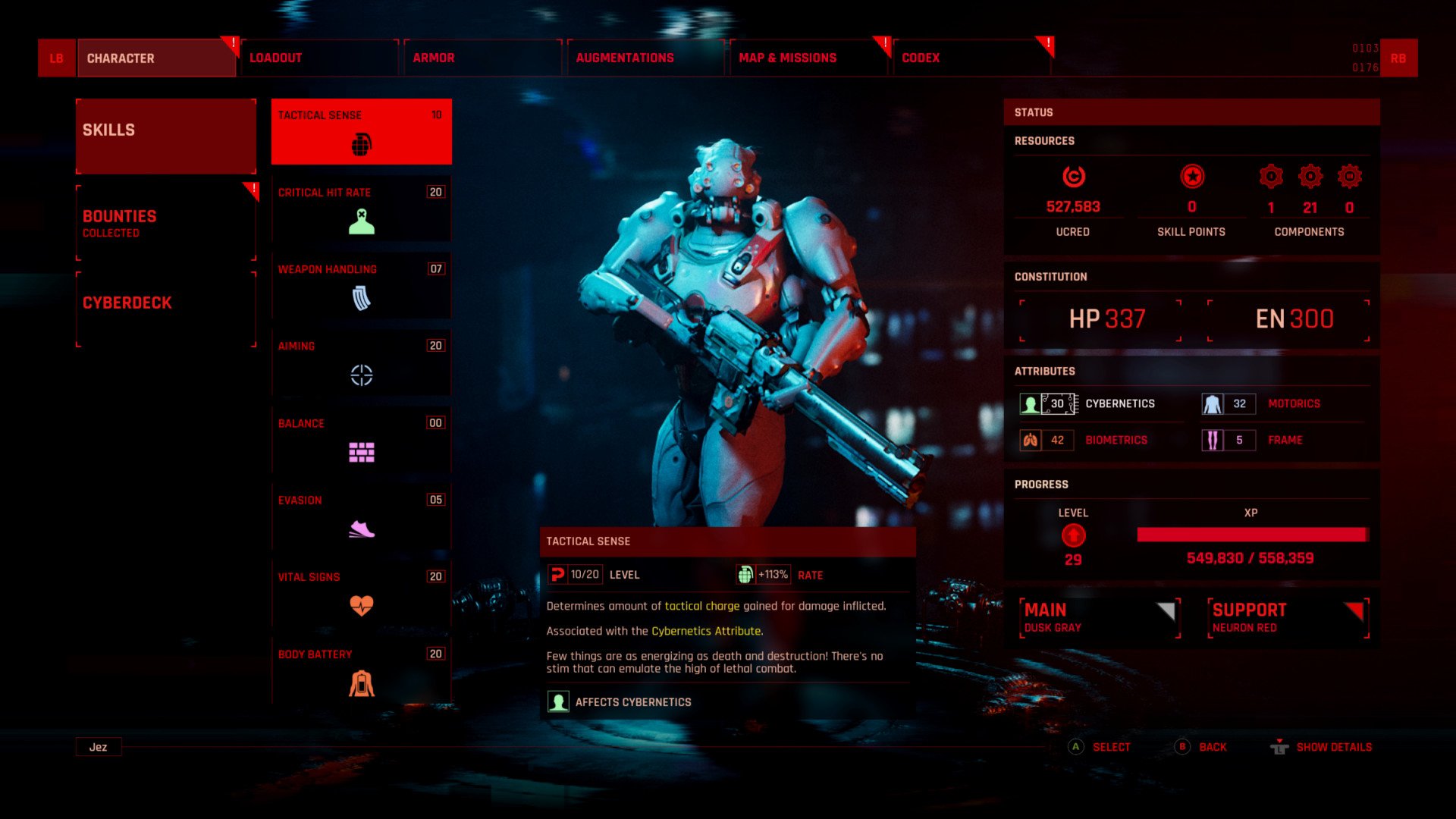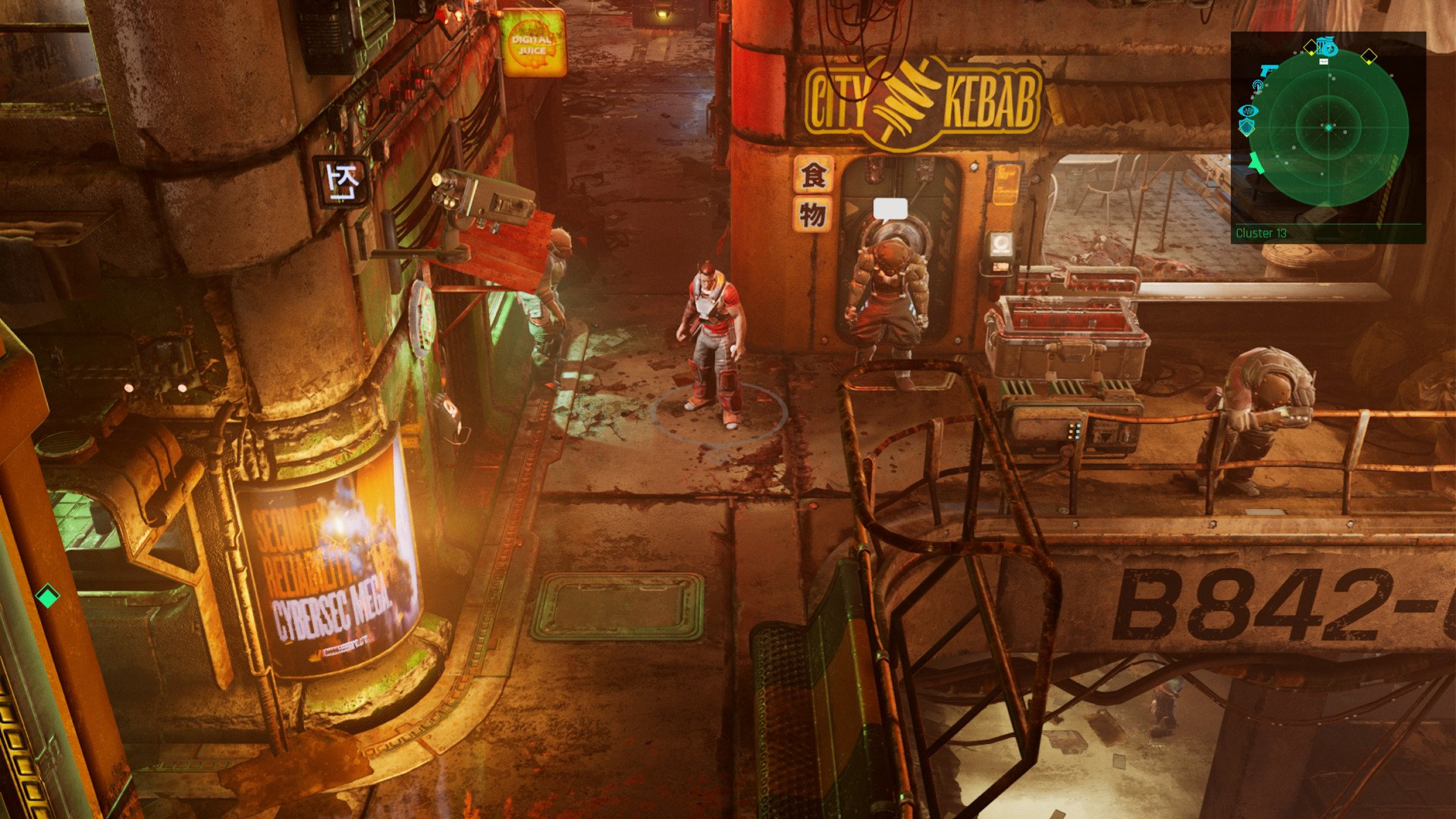When I previewed The Ascent a little while ago, I found myself incredibly excited. Could this be the cyberpunk-styled Diablo I've long-yearned for? Like Icarus, The Ascent soars to greatness early on but doesn't quite stick the landing.
As I write this I've just fully completed The Ascent, including the campaign and all the side quests. It offers some really great value at $30, complete with Xbox Game Pass support, but I can't help but feel like true greatness just slipped out of reach. The jaw-droppingly gorgeous world, fist-poundingly violent combat, and the intrigue-laden story don't do enough to smooth over its half-baked RPG systems, odd structure, and collection of glitches, which hold back the overall experience.
Despite everything, though, I had a blast with The Ascent, and hope to see it get a bit more love in the coming months to help it realize its true potential.
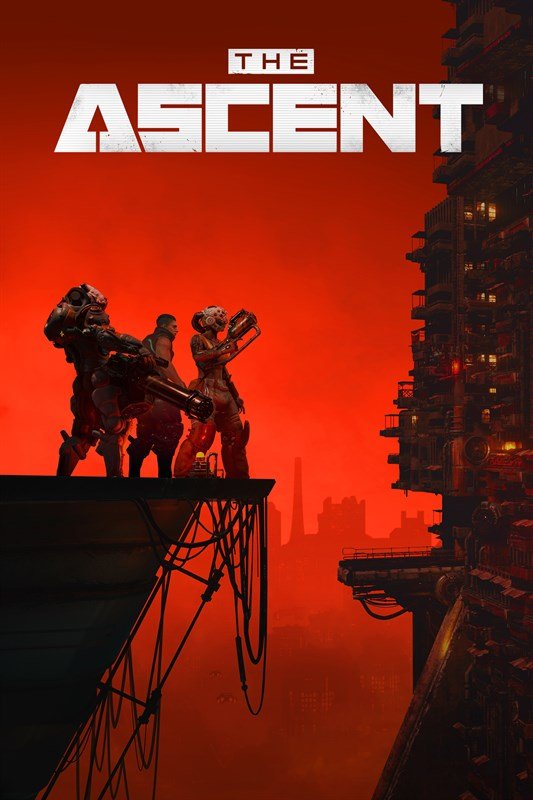
Bottom line: The Ascent is a solid evolution of the twin-stick formula, offering some of the most detailed and impressive visuals the gen has to offer so far. However, The Ascent needs a couple of polish passes as of writing, due to bugs and other glitches. Additionally, the game suffers from a lack of testing, with balance problems and structural issues that weaken the latter half of the game.
Pros
- Incredible visuals in a truly jaw-dropping world
- Infectious combat with a decent variety
- Meaty campaign with great characters and lore
Cons
- Glitches and bugs detract from the experience
- The UI is generally awful
- Co-op implementation is clunky
- Game structure needs a lot of work
Visuals, Combat, and World
The Ascent: The good stuff
| Category | The Ascent |
|---|---|
| Title | The Ascent |
| Developer | Neon Giant |
| Publisher | Curve Digital |
| Genre | Action RPG |
| Play time | ~20 hours |
| Players | 1 to 4 (online and local) |
| Launch date | July 29, 2021 |
| Xbox Game Pass | Yes |
| Launch price | $30 |
Let's get to the point, from the moment you lay eyes on The Ascent, you'll know there's something truly special here. Quite honestly, Neon Giant has produced one of the best-looking games of the generation thus far, with a truly painstaking approach to its environments and world-building.
Set on the cyberpunk multi-species planet colony of Veles, The Ascent defies the developer's svelte employee count and delivers something with visuals you'd sooner expect of a AAA studio. Truly meticulous detail meets absolutely stunning lighting and shadows. Dozens upon dozens of NPCs going about their daily business, with drones floating overhead, flanked by massive hologrammatic billboards and towering habitats washed in layers of interstellar grime and nuclear pollution. Indeed, the arcology feels like a society on the brink of collapse. Factories and facilities break down and explode in front of your very eyes, while crime scenes play out in the background. Mountains of bodies lay discarded and ignored in the streets, while NPCs cry, "It's happening again!" every time you kickstart the next round of violence. Life on Veles seems miserable, but hey, at least it looks beautiful from the safety of my QLED TV.
Every corner of this mechanized world will be quenched in blood by the time you finish the game.
Every corner of The Ascent feels hand-crafted, with minimal copy and paste. Every seedy bar, strobe-blasted nightclub, cybernetic-selling storefront feels handcrafted, with jaw-dropping 3D vistas. Despite the fixed camera angle, which can often feel a bit claustrophobic, The Ascent's unique vertical world design gives you a persistent view of the wider world, creating a breathtaking sense of scale.
All the latest news, reviews, and guides for Windows and Xbox diehards.
Veles is a towering arcology structure, comprised almost entirely of steel and concrete. Arcologies are theoretical structures that serve as a type of artificial ecosystem, potentially built on planets that lack natural habitats. The arcologies are incredibly well realized, with mountains of lore that explain how the world works. Huge tokamak fusion reactors power the world, while also recycling the waste from the millions of Velesian citizens. I use the term citizens quite loosely.
Veles is essentially a work colony, where predatory corporations exploit the desperate with promises of a new life in the stars, except they pay back their travel and accommodation fees by becoming indentured servants, or "indents." Many of them won't ever know true freedom, as the unregulated corporations deploy layers of bureaucracy and debt to keep indents in perpetual servitude. You're one of these indents.
At the start of The Ascent, you make a character with a limited but passable customization system, and eventually evolve into a cybernetic murder machine with extreme prejudice. There are piles of weapons and abilities to choose from, enhanced by specific stat choices you make throughout the game. Spawn waves of robots that explode on death, producing torrents of charred viscera. Incinerate enemies with flamethrowers, laser rifles, and microwave emitters. Produce a gigantic proton beam and vaporize scores of gangbangers in a flash. Grenades. Mech suits. Missiles. Cybernetic enhancements. There's a truly dizzying amount of combat choices you can get your teeth into while crafting a build, or meeting specific challenges. Robots take more damage from energy weapons, while organic unarmored enemies are susceptible to ballistic weapons and fire. It's a bit tricky to get to grips with at first, but with some practice, you'll become a cybernetically enhanced walking tank, tearing through hordes of enemies with reckless abandon. Indeed, a lot of people want to kill you in this game.
The game's title describes pretty much how the game plays. You start out in the irradiated underbelly of Veles, literally in the sewage works. The game charters your ascent to the pinnacle of the arcology, clawing your way up the ranks of different crime lords, hackers, and eventually corporate interests, growing in power and affluence as you go. The arcology is separated into several floors that represent the poorest indents at the bottom, with the rich corporate suits at the top, in a near-literal ivory tower.
Source: Windows Central | Neon Giant
The Ascent also refers to the game's Ascent Group, which had full control over the arcology until their business mysteriously collapsed. Competing corporations swooped in like vultures, appropriating the different facilities and services with their private armies, with desperate indents like yourself caught in the crossfire.
The Ascent features some strong characters with unique designs. Various alien races make up the indent population, including "sapiens," (you), as well as simple AI robots and computers. Your personal AI revels in violence against organics, and unaffectionately refers to you as "Flesh" throughout the game, which is hilarious and slightly unnerving. Indeed, everything in The Ascent is a tad unnerving, with layers of dystopia injected into every plot point and ambient story beat. NPCs discuss life in the arcology, and datapads and side quests add variety and flavor to the rich Veles canvas. The big story missions are where The Ascent shines the most, with some truly wild biomechanical characters, with great writing and solid character acting. Many of these fights often culminate in a boss event too, testing the depths of your skills and the thoughtfulness of your itemization.
The world-building reminded me of the Godspeed You! Black Emperor lyric, "We're trapped in the belly of this horrible machine, and the machine is bleeding to death." Every corner of this mechanized world will be quenched in blood by the time you finish the game, and the ascent to the top was as satisfying as it was visually stimulating, for the most part.
Bugs, poor UI, and half-baked systems
The Ascent: The bad stuff
The Ascent starts off incredibly strong, and as I said in an earlier preview, The Ascent felt like it could be the stuff dreams are made of. However, the execution falls short in various ways.
The first and most annoying problem in The Ascent is the UI. The map tools are generally awful, giving you quest markers that lead to nowhere, without indicating elevation. The text on the UI is absolutely tiny, and requires a magnifying glass to read — it's especially strange since The Ascent does have accessibility options that let you increase the font size of subtitles. I appreciate minimalism, but The Ascent goes a bit far with it.
There's a parade of small bugs and glitches that frustrate the experience.
There's a parade of small bugs and glitches that frustrate the experience. Tutorials popping up multiple times. Quest markers and progression misfiring. UI lockup bugs that prevent movement. The store UI doesn't work properly, showing inventory that isn't there. The hide helm toggle doesn't work consistently. I could go on. Thankfully, there's nothing in there that's inherently game-breaking though. Although, some quests fire the next progression step only when you enter a specific area. If you die or turn off your console, and come back to the game, there's a fair chance you'll be checkpointed somewhere far away from where you need to be to trigger the next quest marker. I had a couple of issues where quests just didn't fire the next step correctly due to this. I made sure that I only logged out of the game if I had a quest marker currently on screen as a result.
Despite the issues, I was able to get through the game and complete it, in what was fun and action-packed 15 or so hours. Towards the middle and end of the game, I couldn't help but wonder how much better it could've been structurally.
The RPG layer of The Ascent flies in the face of the game's story structure to some degree. At the start of the game where you need currency the most, you don't get enough. Towards the end of the game when you're swimming in uCreds, there's nothing to buy. The items you need to upgrade your weapons are scarce, and there's no way to purchase them. As such, I ended up not using any of the wild weapons I found in the late game, because I'd spent all my components upgrading the weapons I got in the early game. I found a shot-Gatling gun. I found a buzzsaw thrower. I found a huge laser arc cannon and a flame launcher. Alas, I didn't have any components to upgrade them to my current character level, so they all hit like a wet noodle. I could've grinded random mobs to get the components I needed, but I feel like that would've taken hours. I didn't have a problem finishing the game with the basic starter weapons I upgraded, it's just a shame that they hid so many of their cool weapon designs behind this restrictive upgrade system.
Similar restrictions hinder the game's augments and abilities. Swapping abilities in the field strips you of all your energy for a good few minutes. This discourages you from trying new abilities out as the situation calls for it. What's worse, the augments and enhancements are utterly imbalanced, despite having really spectacular effects. Different stats give you boosts to specific augments, but even trying out different builds, I found that a few really stood out as being far more powerful than others. I ended up just using a handful of abilities to get through the game in the end, since using other augments made combat needlessly more difficult.
A side quest gave me access to an incredible and hilarious "Tentakill" ability, which turned me into Dr. Octopus, and murders enemies with cyborg tentacles in a radius around your character. The problem is, this ability animation locks your character, it uses a mountain of energy, and has a pretty hefty cooldown. The spiderbots conversely not only do more damage, but they also draw agro on enemies, deal area damage, and don't animation lock your character. There wasn't a scenario in the entire game where using Tentakill was viable over using the spiderbots.
Perhaps the more situational abilities would've been more useful, if there were more situations in the game. The Ascent tells you to use specific armor resistances for certain challenges for example, but I only really found it necessary at one point in the entire game to equip some fire resistance gear, for a specific boss. It feels a bit like the vision for The Ascent as an "RPG" didn't really match up with the size of the overall game.
The structure honestly is just a bit strange throughout. By the time you get your cyberdeck hacking tools maxed out, you no longer need half of the abilities it grants to you. There are a couple of instances in the game where you have to do mountains of walking too, owing to the game's clunky fast travel system. You can only use taxis in certain areas, meaning that inside enclosed places you're tasked to walk on foot to your next destination.
It feels a bit like the vision for the game as an "RPG" didn't really match up with the size of the world.
There are a couple of times in the game you're required to ascend up and down the arcology, and since you can't fast travel between floors, you have to manually walk to the lifts which is incredibly laborious. A character even remarks about how "sapiens need cardiovascular exercise to stay healthy," after directing me back all the way down from the top to the bottom of the arcology. It was funny, but also not.
Finally, the way co-op is implemented is also a bit disappointing. There's no post-game content, save for the ability to go and mop up any leftover side quests. If you bring your leveled character into a friend's game, it resets your story progress to their save file. You can make new character profiles to play with friends instead, but this isn't the drop-in co-op that most of us will have grown accustomed to in 2021. Also, in a lot of ways, it's just not a great co-op game. Your co-op buddy is left out of cutscenes and conversations, so you're essentially just bringing them in as hired help. Experiencing the game for the first time as a co-op player will be a far inferior experience than being the player host, or playing it solo. Due to the balance issues, and the lack of variety in viable gameplay builds, I'd argue that there's not a great deal of replay value on offer here either.
The Ascent feels like it was originally designed as a twin-stick shooter, but somewhere later in development, it was decided it needed to be an RPG. And as a result, those RPG systems feel half-baked.
The Ascent: Should you play it?
The Ascent is a tantalizing vision of a much superior game, that desperately needed a bit more forethought and testing. The UI needs a ton of work, and the map tools and quest markers need several polish passes.
Neon Giant has an incredible world to build from here.
I'd also argue that Neon Giant should have a deeper look at how some of their RPG progression systems work, given that the game isn't long enough to actually experience half of the weapons they implemented into the game.
Despite the issues, though, I had a great time with The Ascent. The world alone makes The Ascent worth playing through at least once, with its nightmarish rendering of a chrome-plated dystopia, baked with deep and meaningful lore and great characters. When the combat is firing on all cylinders it's a spectacular theme park of '80s-style ultra-violence that at least I for one cannot get enough of.
The Ascent's saving grace may be Xbox Game Pass, and its generous $30 price tag. Neon Giant has an incredible world to build from here, with a story that delivers intrigue and spectacle in abundance. I hope with my whole heart that The Ascent gets a bit more love and care to help it realize its full potential, because it's very obviously there, beneath the grime and glitches. Regardless, even despite the issues, The Ascent slaked my virtual bloodlust and left me eager to visit Veles again in the future. And I sorely, sorely hope Neon Giant gives us the opportunity to do so.

Bottom line: While The Ascent has some very clear problems, it remains a satisfying 15-20-hour cyber party of violence and mayhem, enjoyable for up to four friends in online and local co-op. The Ascent could use a bit of post-launch love and care to help it realize its true potential, but the world design, general combat, and story make it well worth the journey.

Jez Corden is the Executive Editor at Windows Central, focusing primarily on all things Xbox and gaming. Jez is known for breaking exclusive news and analysis as relates to the Microsoft ecosystem while being powered by tea. Follow on Twitter (X) and tune in to the XB2 Podcast, all about, you guessed it, Xbox!
